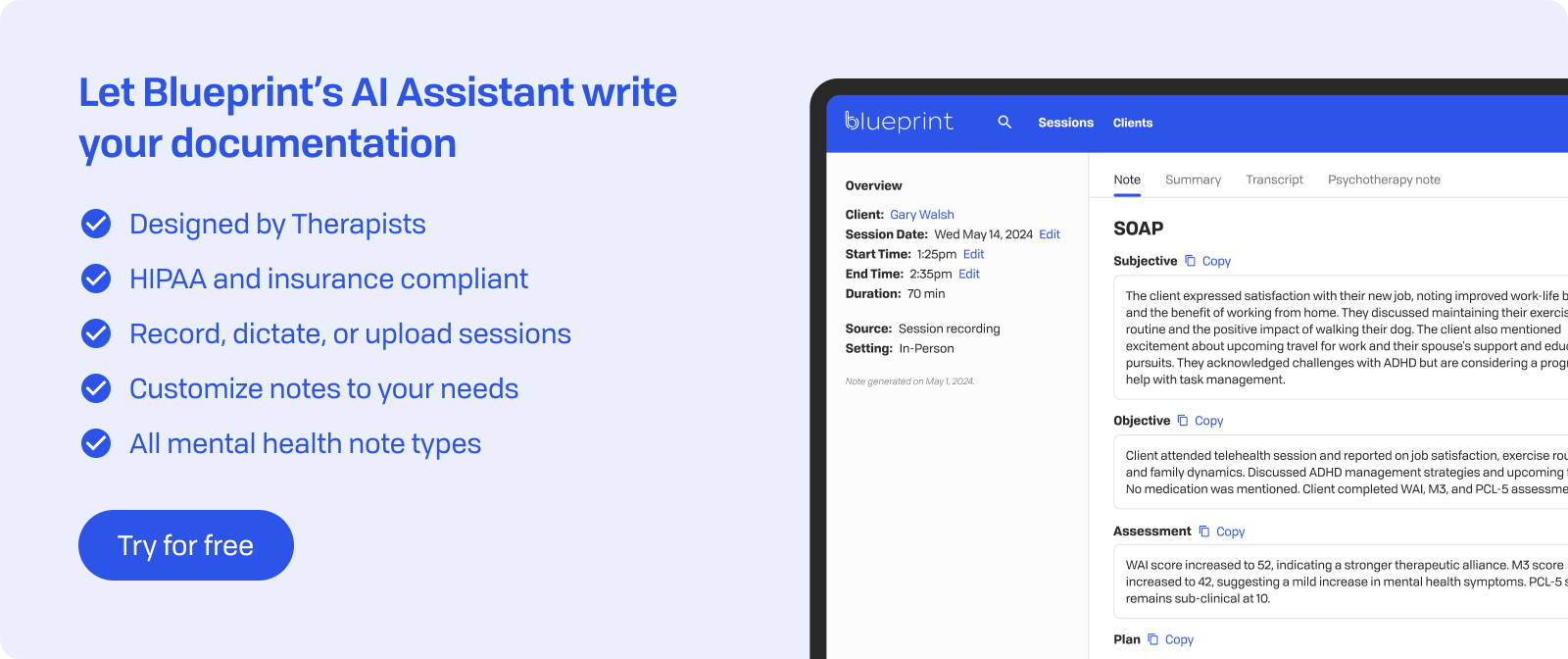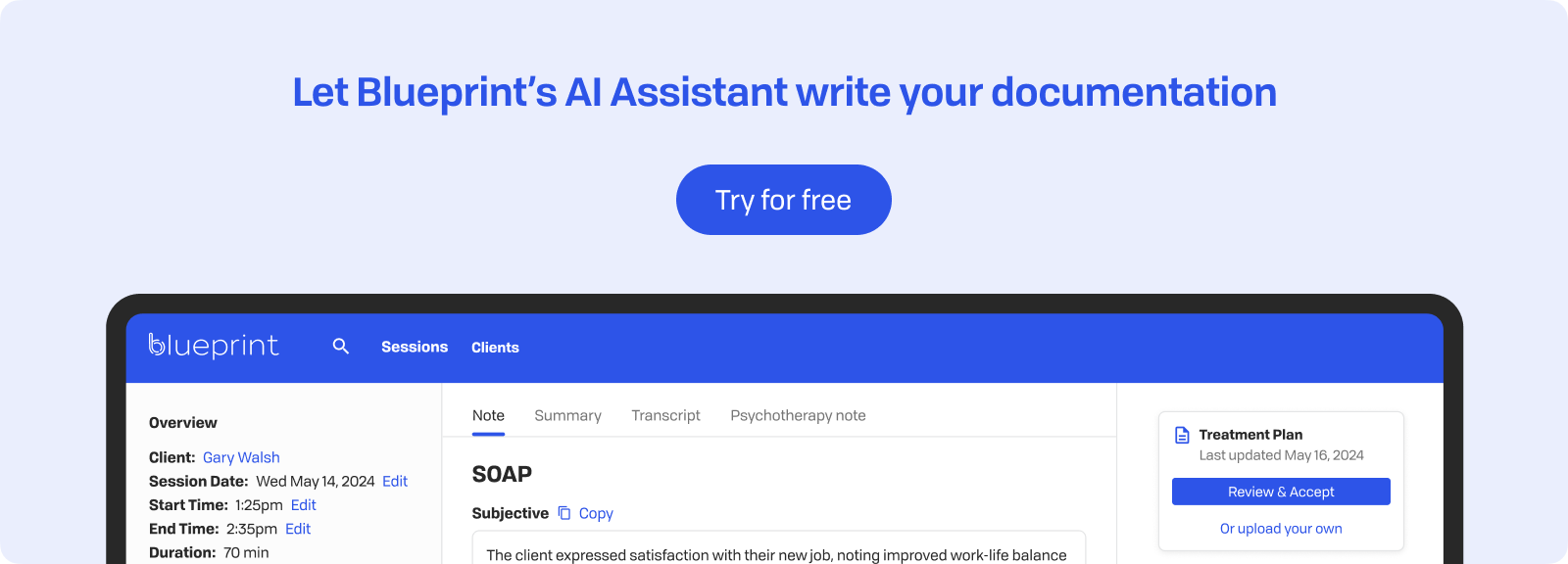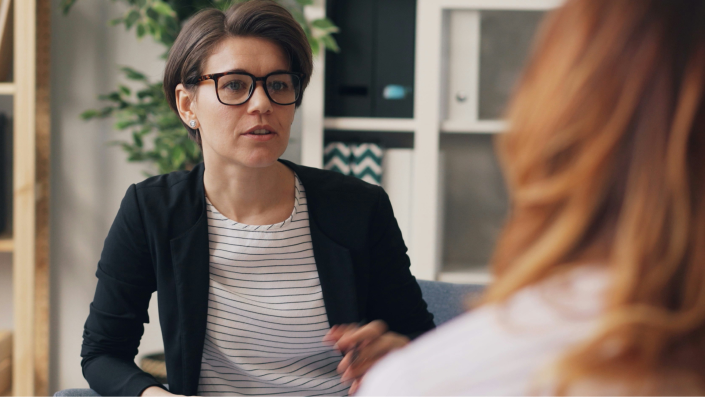In Brief
The tension between staying objective and building human connection lies at the core of every therapeutic encounter. We aim to see our clients clearly, yet we bring our own experiences, beliefs, and emotions into the room. This fundamental paradox shapes how we understand, assess, and help those who seek our care.
In psychology's pursuit of legitimacy as a science, objectivity has long served as a gold standard. We develop standardized assessments, diagnostic criteria, and evidence-based protocols to reduce bias and improve accuracy. However, anyone who's sat across from a client knows that pure detachment isn't just impossible—it may not even be desirable.
Finding the right balance between clinical objectivity and therapeutic humanity requires both skill and wisdom. Too much distance, and we miss the nuanced, lived experience of our clients. Too little, and we risk projecting our own stories onto theirs, and blurring integral boundaries. This delicate balance influences everything from how we conduct assessments to how we set therapy goals.
Understanding Objectivity in Clinical Contexts
Objectivity in psychology involves striving for impartial, unbiased clinical observations and interpretations. It means seeing what is actually there, rather than what we expect or want to see. This involves documenting observable behaviors, using standardized measures, and separating our personal reactions from our professional assessments.
Psychology has historically aimed for the neutrality found in the natural sciences. Early pioneers wanted the field to be seen as a legitimate scientific discipline. This led to an emphasis on measurable phenomena, controlled experiments, and developing instruments like the OBQ-44 or AAQ-II that quantify subjective experiences.
Yet here's the inherent challenge: we are human beings studying human beings. Both therapist and researcher bring their own histories, cultural backgrounds, and unconscious biases to every interaction. Our perceptions filter through our experiences, our theoretical orientations shape what we notice, and our emotional responses influence how we interpret what we observe.
This reality doesn't diminish the value of objectivity—it simply means we must approach it differently. Rather than seeing objectivity as complete neutrality, we can treat it as an ongoing practice of self-awareness and intentional perspective-taking. It's about recognizing our subjectivity while still striving for clarity and accuracy in our clinical work.

The Myth of Pure Objectivity
The uncomfortable truth is that complete objectivity in clinical practice is impossible. Every observation we make passes through the filter of our cultural background, personal values, and professional training. A therapist raised in an individualistic society might interpret a client's family enmeshment differently than one from a collectivist culture. Our theoretical orientations—whether psychodynamic, cognitive-behavioral, or humanistic—fundamentally shape what we notice and how we interpret it.
Even our most "objective" tools reflect human bias. Consider these documented examples:
- Weight bias in assessment: Research shows clinicians often attribute obesity to character flaws rather than considering systemic factors like poverty or medical conditions, affecting both diagnosis and treatment recommendations.
- Gender bias in evaluation: Female clinicians receive more negative evaluations despite equivalent objective performance, while assessment tools may inadvertently reward traditionally masculine traits like overt confidence over competence.
- Mental illness stigma: Clinicians demonstrate both implicit and explicit biases when treating clients with serious mental illness, often providing less comprehensive care for their physical health concerns.
- Diagnostic shortcuts: Premature closure—accepting an initial diagnosis without considering alternatives—remains one of the most common sources of clinical error, often reinforced by confirmation bias.
These biases don't make us bad therapists; they make us human. The real danger lies not in having biases but in denying them. When we pretend to be perfectly objective observers, we lose the opportunity to examine how our perspectives shape our clinical work. Recognizing our inherent subjectivity becomes the first step toward more honest, effective care—allowing us to work with our biases rather than being unconsciously controlled by them.

Why Objectivity Still Matters
Even with its limitations, objectivity plays a key role in effective clinical practice. Instead of seeing it as an unattainable ideal, we can view objectivity as a useful tool that enhances our work in several important ways.
Standardized diagnostic assessments and outcome measures provide a common language across the mental health field. When we use validated instruments like the ODSIS for depression or structured diagnostic interviews, we create consistency that transcends individual clinical styles. This standardization enables:
- Reliable tracking of treatment progress: Objective measures allow us to document changes that might be too subtle for subjective observation alone.
- Evidence-based treatment planning: Standardized assessments help identify which interventions are most likely to benefit specific presentations.
- Quality assurance: Consistent evaluation methods support accountability and continuous improvement in our practices.
Objectivity also forms the basis for effective professional collaboration. When consulting with colleagues, referring to other specialists, or working within interdisciplinary teams, objective data provides a shared reference point. A psychiatrist can understand your clinical concerns more clearly when you present standardized assessment scores alongside your clinical impressions. Insurance companies require objective documentation to justify continued treatment. Supervisors can offer more targeted guidance when reviewing concrete behavioral observations rather than vague impressions.
Most importantly, striving for objectivity protects our clients from the full weight of our biases. While we can never eliminate subjectivity entirely, structured approaches create guardrails that keep our personal reactions from overwhelming clinical judgment. This measured distance allows us to hold space for our clients' experiences without imposing our own narratives onto their stories.
Strategies to Cultivate Balanced Objectivity
Developing balanced objectivity requires intentional practices that recognize our humanity while enhancing our clinical clarity. These strategies help us work with, rather than against, our inherent subjectivity.
Reflective supervision and peer consultation act as important mirrors for our blind spots. Regular meetings with supervisors or trusted colleagues provide space to examine how our emotional responses, cultural backgrounds, and theoretical orientations affect our clinical perceptions. This collaborative reflection involves:
- Exploring triggered feelings: Discussing cases that evoke strong reactions helps identify when personal material interferes with clinical judgment.
- Examining parallel processes: Noticing how client dynamics play out in supervision reveals unconscious patterns we might miss alone.
- Challenging assumptions: Colleagues can question interpretations we take for granted, offering alternative perspectives.
Structured tools and measures provide anchors for clinical reasoning without replacing professional judgment. Standardized assessments offer consistent reference points while leaving room for clinical intuition. The key is to use these tools as conversation starters rather than definitive answers—letting data inform rather than dictate our understanding.
Transparent reasoning makes our subjectivity visible and workable. When documenting assessments or discussing cases, explicitly stating our thought processes helps distinguish observation from interpretation. This might look like: "Client appeared withdrawn (observation). I wonder if this reflects depression or cultural norms around emotional expression (acknowledging interpretive choices)." This practice turns hidden biases into explicit hypotheses that can be tested and revised.
These strategies don't eliminate subjectivity—they use it as a clinical tool while maintaining the rigor our clients deserve.

Integrating Objective and Subjective Knowledge
The most effective clinical work happens when we combine objective data with personal insights. Client stories provide context that makes numbers meaningful, while standardized measures help track progress through the often messy path of therapeutic change.
Consider how different data sources work together:
- Quantitative measures reveal patterns: A client's AAQ-II scores might show decreasing psychological flexibility over several weeks, indicating a concerning trend.
- Qualitative observations provide context: Process notes reveal the client recently lost their job, explaining the score changes and guiding intervention adjustments.
- Client narratives offer meaning: The client describes feeling "trapped" by financial pressures, giving language to their experience that numbers alone cannot capture.
This integration occurs throughout treatment. During intake, standardized assessments establish baselines while open-ended questions explore the client's unique story. In ongoing sessions, we might use the ODSIS to track depression symptoms while also paying attention to subtle shifts in the client's self-talk or body language. Treatment planning benefits from both outcome measures that demonstrate progress and the client's own sense of what constitutes meaningful change.
The key is not to favor one type of knowledge over another. Numbers without stories lack humanity; stories without structure can become unclear. When we hold both simultaneously—tracking GAD-7 scores while deeply listening to how anxiety manifests in a client's daily life—we create a three-dimensional understanding that respects both clinical accuracy and human complexity.
Ethical Implications of Over-Relying on Objectivity
When objectivity turns into inflexibility, it shifts from being a helpful clinical tool to an ethical concern. Striving for neutrality can create emotional distance, weakening the human connection crucial for therapeutic work and healing.
Imagine a therapist who depends entirely on standardized assessments and diagnostic criteria. By strictly following evidence-based protocols, they might overlook important contextual factors that could change the entire clinical perspective. A client with high depression scores might actually be dealing with grief, cultural adjustment, or systemic oppression—nuances that objective criteria alone cannot capture. This narrow focus risks misdiagnosis and inappropriate treatment that doesn't meet the client's actual needs.
The ethical risks of excessive objectification include:
- Dehumanization through detachment: Viewing clients merely as collections of symptoms rather than as whole individuals undermines the respect they deserve.
- Overlooking critical safety concerns: Strict adherence to "neutral" observation might lead therapists to miss subtle signs of abuse, suicidality, or worsening conditions that need immediate attention.
- Continuing systemic harm: Applying "objective" diagnostic criteria without question, especially those developed in specific cultural contexts, can pathologize normal variations in human experience.
Our ethical duty goes beyond accurate assessment to include genuine engagement. Curiosity about the client's lived experience, being present in the therapeutic moment, and being open to their story—these qualities define ethical practice, and support a client's well-being. When we rely too heavily on objectivity, we neglect our responsibility to fully see and respond to the humanity of those we serve.

Objectivity as a Skill, Not a State
Objectivity in psychology isn't a one-time achievement but an ongoing practice that requires continual development. Like any clinical skill, it grows through deliberate effort, feedback, and refinement over time.
This change in perspective affects how we approach our work. Instead of saying "I am objective," we ask "How can I practice objectivity today?" This reframing acknowledges that our ability for clear, unbiased observation varies based on our emotional state, the specific client, and many other factors.
Developing objectivity as a skill involves:
- Regular self-reflection: Taking time to examine our reactions, assumptions, and blind spots after challenging sessions
- Seeking diverse perspectives: Actively engaging in supervision and consultation with colleagues from different theoretical orientations and cultural backgrounds
- Continuing education: Staying informed with research on bias, cultural curiosity, and assessment validity
- Receiving feedback openly: Viewing critiques of our clinical judgment as opportunities for growth rather than personal attacks
Most importantly, this approach requires genuine humility. Recognizing our fallibility isn't a professional weakness—it's a clinical strength that keeps us open to learning and responsive to our clients' needs. When we admit uncertainty, ask for help, or revise our initial impressions, we model the kind of flexible thinking that promotes healing.
The most skilled clinicians understand that objectivity requires both rigor and flexibility. They hold their clinical impressions lightly, remain curious about alternative explanations, and continuously refine their ability to see clearly while staying deeply human.
Key Takeaways
While true objectivity in therapy remains out of reach—we cannot completely detach from our human perspective—the effort to achieve clarity, accuracy, and fair-minded observation greatly enhances the care we provide. This paradox shapes ethical clinical practice.
Using objectivity as one tool among many, rather than as the sole standard, can be more effective. When we combine structured assessments with attentive listening, standardized protocols with respect for cultural differences, and diagnostic criteria with genuine interest in each client's unique story, we create room for both precision and humanity. The most effective therapists understand that:
- Clinical clarity requires self-awareness: Recognizing our biases allows us to manage them rather than being unknowingly influenced by them
- Structure supports rather than replaces judgment: Standardized tools offer helpful guidance while allowing space for clinical intuition and the client's insights
- Professional distance must coexist with personal presence: We can maintain appropriate boundaries while still offering genuine warmth and engagement in the therapeutic relationship
Reflective practice turns objectivity into an ongoing skill. Through supervision, consultation, and honest self-reflection, we continuously improve our ability to see clearly while staying connected to our clients' humanity.
Ethical practice demands that we navigate this tension without seeking to completely resolve it. We need to be precise enough to track progress accurately and adaptable enough to honor each client's lived experience. This balance—between scientific accuracy and human understanding—creates the environment where genuine healing can occur.

How Blueprint can help streamline your workflow
Blueprint is a HIPAA-compliant AI Assistant built with therapists, for the way therapists work. Trusted by over 50,000 clinicians, Blueprint automates progress notes, drafts smart treatment plans, and surfaces actionable insights before, during, and after every client session. That means saving about 5-10 hours each week — so you have more time to focus on what matters most to you.
Try your first five sessions of Blueprint for free. No credit card required, with a 60-day money-back guarantee.
























